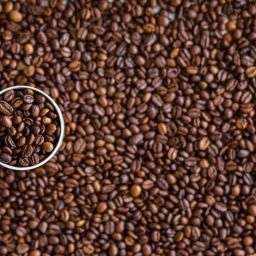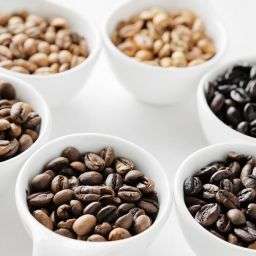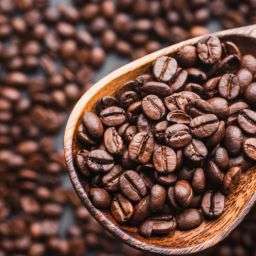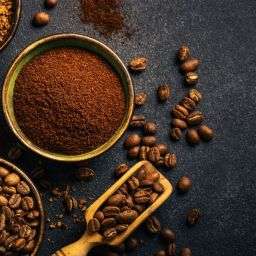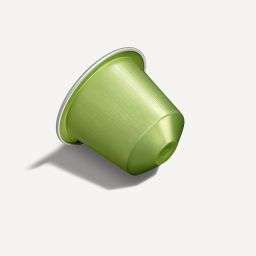
Cold brew coffee has become a staple for coffee lovers around the globe, known for its smooth, mellow flavor that’s less acidic than traditional hot brewed coffee. It’s a refreshing alternative, especially during the warmer months, but has also gained popularity as a year-round beverage choice. The process involves steeping coarsely ground coffee in cold water for an extended period, usually 12 to 24 hours. This slow extraction process is what gives cold brew its distinct taste.
A common question among coffee enthusiasts is whether you can use any coffee for cold brew. Technically, yes, you can use any type of coffee bean for making cold brew. However, not all coffee types will yield the same taste profile. Some beans and roasts are more suited to cold brewing than others, making the choice of coffee a significant factor in the quality and flavor of your cold brew.
Key Takeaways
- Coffee Type Matters: While any coffee can be used, medium to dark roast beans are often preferred for cold brew. These roasts tend to produce a richer, more full-bodied flavor that complements the cold brew process.
- Grind Size Is Key: A coarse grind is essential for cold brew. It allows for optimal water flow and flavor extraction, resulting in a smoother, less bitter brew. Fine grinds can lead to over-extraction and a bitter taste.
- Brewing Techniques Vary: The two main methods for making cold brew are the drip method and the immersion method. Each has its unique process and can affect the final flavor of your coffee. The drip method involves water dripping slowly over coffee grounds, while the immersion method soaks the coffee grounds in water for a period before filtration.
- Experiment for Best Results: Finding the perfect cold brew is a personal journey. Experiment with different coffee beans, grind sizes, brewing times, and water ratios to discover what works best for your taste preferences.
What Makes Cold Brew Different?
Cold brew coffee stands out from its hot-brewed counterparts in a few key ways, primarily due to its brewing temperature and time. Unlike traditional coffee, which is brewed quickly using hot water to extract flavor and caffeine, cold brew coffee is made by steeping coarsely ground coffee in cold water for an extended period, usually 12 to 24 hours. This slow extraction process at a lower temperature results in a coffee that’s less acidic and smoother, offering a unique flavor profile that many find more palatable and refreshing, especially on a hot day.
The cooler brewing temperature of cold brew significantly reduces the extraction of acids and oils present in coffee beans. This not only impacts the acidity but also alters the flavor profile, often highlighting different notes than those perceived in hot coffee. The result is a coffee that can taste sweeter and smoother, with a rounder and more nuanced flavor that’s easier on the stomach.
Choosing the Right Coffee for Cold Brew
When it comes to making cold brew, not all coffee beans are created equal. The roast level and origin of the beans can have a significant impact on the flavor of your cold brew.
- Roast Level: Medium to dark roasts are generally preferred for cold brew. These roasts bring out a rich, full-bodied flavor in the coffee, which complements the cold brewing process well. Medium roasts offer a balanced flavor profile, while dark roasts provide a bolder, more intense coffee experience.
- Bean Origin: The origin of coffee beans also plays a crucial role in the flavor of your cold brew. African beans, for instance, are known for their floral and fruity notes, adding an exotic twist to your coffee. Central American beans typically offer a bright and acidic flavor, ideal for those who enjoy a crisper coffee taste. Meanwhile, South American beans, especially from Colombia and Brazil, are prized for their nutty and full-bodied flavors, making for a richer cold brew.
Grinding Your Coffee for Cold Brew
When it comes to making cold brew, the grind size of your coffee plays a critical role. A coarse grind is recommended because it allows water to flow through the coffee grounds efficiently, ensuring optimal flavor extraction without over-extraction, which can make your coffee taste bitter.
Using a burr grinder is ideal as it provides a consistent grind size compared to a blade grinder, which can produce uneven grounds. Consistency in grind size leads to a smoother and more balanced cold brew.
Brewing Techniques for Cold Brew
Drip Method: This technique involves slowly dripping cold water over a bed of coffee grounds, allowing the brewed coffee to drip into a collection vessel below. This method can take several hours but results in a concentrated and flavorful cold brew. The main advantage is the clarity and distinct flavor profile it can produce.
Immersion Method: Here, coffee grounds are mixed with cold water and left to steep for 12-24 hours, usually in a large jar or pitcher. After steeping, the mixture is filtered to remove the grounds. This method is straightforward and easy to do at home, making it popular among cold brew enthusiasts. The immersion method yields a rich, full-bodied coffee concentrate that can be diluted with water or milk to your taste.
Water Ratio: The strength of your cold brew can be adjusted by changing the water-to-coffee ratio. A common starting point is a 1:8 ratio of coffee to water, but you can adjust this depending on how strong you prefer your coffee.
FAQs
- Can regular ground coffee be used for cold brew? Yes, but coarse ground coffee is recommended for the best results.
- What coffee does Starbucks use for its cold brew? Starbucks uses a specific blend of Latin American and African beans for their cold brew, coarsely ground.
- How long does cold brew last? Cold brew can last up to two weeks in the fridge, but it’s best enjoyed within the first week for maximum freshness.
- Can cold brew coffee be made with whole beans? Technically yes, but grinding the beans is necessary for proper extraction and flavor.
Final Thoughts
Making the perfect cold brew coffee comes down to choosing the right coffee, grinding it to the correct consistency, and selecting a brewing method that suits your taste. Remember, the beauty of cold brew lies in experimentation. Don’t be afraid to try different coffees, adjust your grind size, experiment with water ratios, and explore both drip and immersion methods. Finding your ideal cold brew recipe is a rewarding journey that leads to deliciously refreshing coffee.


